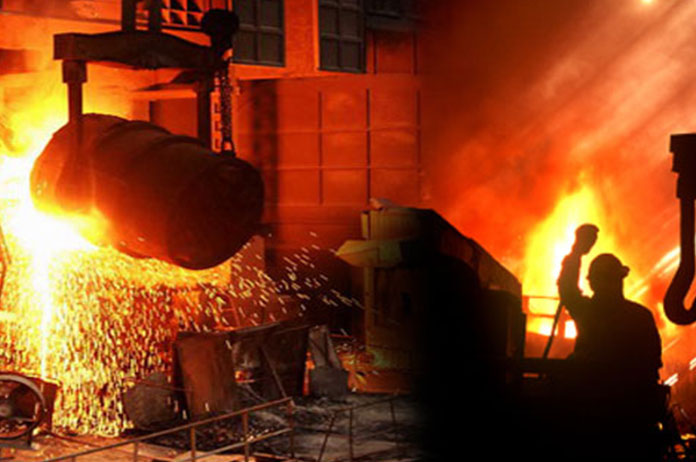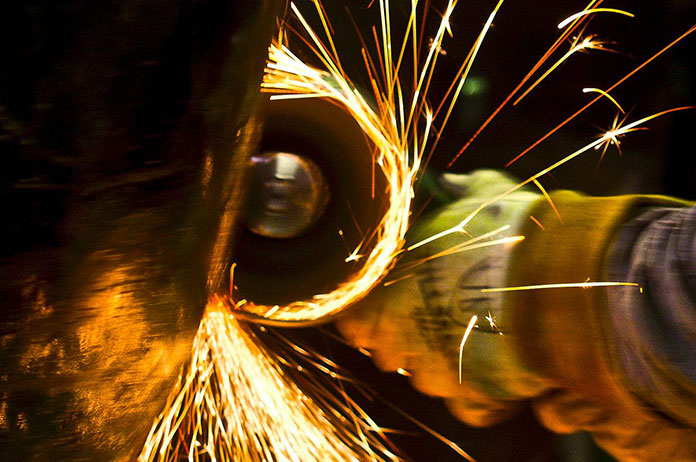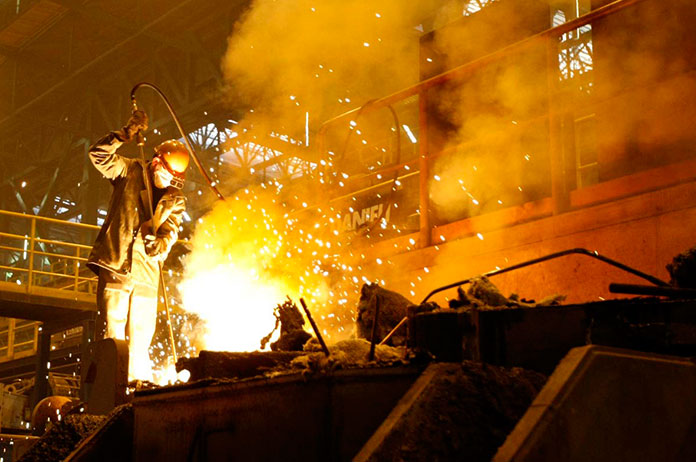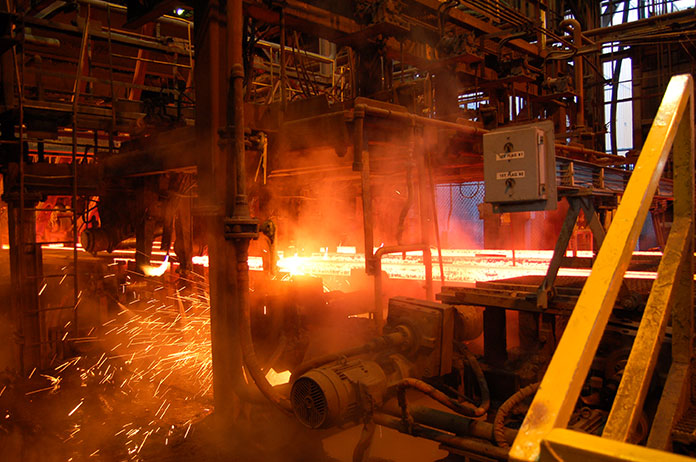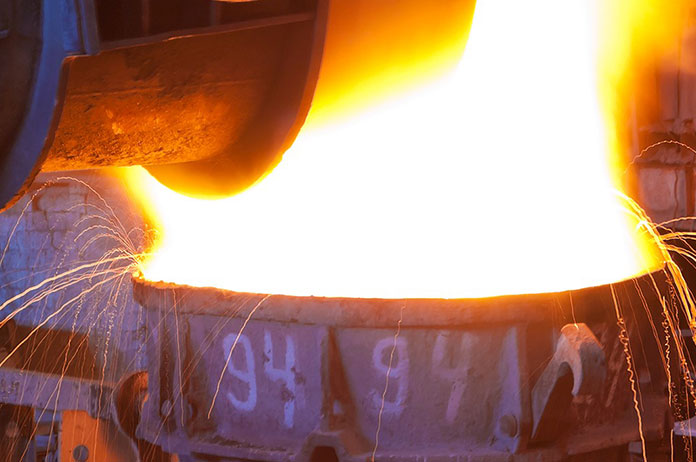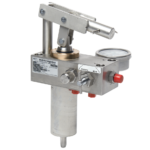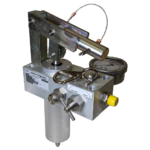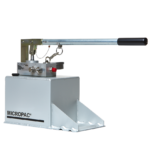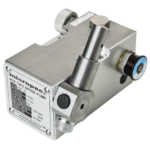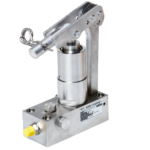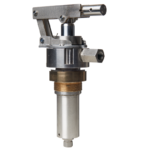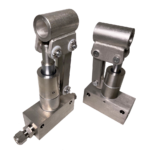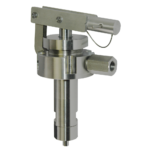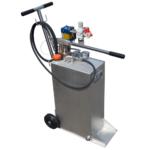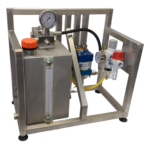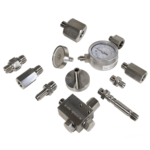Micropac pumps for water hydraulics and eco fluids
Why run hydraulic systems on water?
Our original Micropac pump designed in 1982 was in response to the needs of a customer who was running hydraulics on water. This was a hydraulic trench shoring application. We still make that MW pump today and it is still optimised for water operation.
There are lots of different reasons for using water.
The general environmental benefits are probably number one now. You are no longer consuming a hydrocarbon with all the environmental ramifications. In use, oil spillage or smaller leaks are inevitable when using mineral oil. Once in a while there will be a more serious mishap. Water from the tap is the ultimate environmentally friendly fluid. That said, the moment you need additives to stop freezing or biocides to stop algae growth, it is not long the same harmless fluid. Water may be the perfect eco fluid on day one but has limitations if you are using it for a period or storing it. The moment you buy in a water based fluid that has additives, a considerable amount of care needs to be taken in understanding benefits and limitations. For example, water glycol can become quite corrosive if it is neglected and left for a long period. In addition, a biocide that is effective to stop growth in the fluid is more than likely to be harmful to health and have environmental challenges when it needs to be discarded. Careful research is needed. Many of our users simply draw water from the mains, do their testing or operate their system and do not store the water. That is one option, although it won’t suit everybody.
Some people will not tolerate any harmful leakage or risk of fluid loss. Mineral oil is a very troublesome fluid if it leaks. It won’t dry in situ, remains slippery, damages lots of surfaces and kills vegetation. Oil leeching into groundwater is a total environmental disaster. One example of manual water hydraulic pumps was a well-publicised high tech football stadium cover. The end customer would not tolerate the risk of oil leakage onto the stadium grass. The same is often true with mowing machinery as used on golf courses or tennis courts.
Fire risk is massively important for some industries. Nuclear, mining and steel production simply do not want mineral oil present where in a fire, a bad situation is made even worse. The steel industry has used water hydraulics for a long time. Water was the original fluid for power hydraulics. The first cylinders on Tower Bridge in London were operated on water in 1894 and ran through to 1974.
Cost should be a big driver in running hydraulics on water. Fresh water from a tap or hose is massively cheaper than mineral oil. That is so, but if you have to factor in additives for the water then significantly more demanding and costly engineering in pumps, valves, cylinders and components then there is a downside. Even if you do have to factor in these more demanding engineering solutions for water, you may judge that it is time to move on from mineral oil.
We would say the engineering challenges are the low viscosity of water as a hydraulic fluid and the poor lubricating properties. “Conventional” hydraulic components won’t be up to coping with water. For example, valves will have to be soft seat or poppet types with a seal rather than performing adequately with small clearances for use on more viscous oil. Using elastomeric seals in dynamic applications on water is limited, as water is not the natural lubricant that oil is. Seals can easily dry out and fail, particularly if there are high numbers of cycles involved. You will also need engineered bearings installed rather than relying on fits and an oil film. These engineering challenges cost money and mean that water hydraulic components are significantly different to oil hydraulics. Because the market is much smaller, the costs are even higher than mass market mineral oil products.
One eco-fluid engineering compromise to avoid the specialist engineering is to use water-in-oil emulsions or synthetic fluids that allow conventional hydraulic components to be used, providing adequate viscosity and lubricity. You may then be reducing the oil content right down to a small percentage. Micropac pumps have always been used for a wide range of these alternative fluids and our applications staff will always be pleased to discuss them.
Our hand pumps are fairly simple technology, so we are fortunate that one water hydraulic product can actually cover a wide spectrum of fluids right through from mineral oil then less viscous hydrocarbons like aviation lubricants, petrol or kerosene and through to water. A single multi-fluid product has appeal to customers.
What is special about a Micropac pump for water?
Whether you are operating a hydraulic system running on water or you are carrying out a hydrostatic pressure test on the fluid, our Micropac pumps have always been engineered to be fit for the job.
We use soft seats and poppet valves with an elastomeric element for very low or zero leakage on low viscosity fluids like water.
All our valve seats are replaceable and available in a low cost service kit that includes balls, springs, seats and seals.
We use our 316 stainless liner, hard chromed 316 stainless piston rod and composite piston seals with a double bearing strip. And we still get pumps from the 1980’s back for service.
Do you need a 316 stainless body for water service? Lots of our customers use our anodised alloy and stainless MW-A pump every day on water. Stainless 316 will give you the ultimate in corrosion resistance, but at a higher price. The anodised alloy and stainless MW-A pump is the test pump of choice for the fire sprinkler and misting system industry together with a massive range of other testing applications on site and in the shop around the world. All we would say is don’t use brass in the system because of galvanic corrosion and be careful of long term corrosion on water glycols, if you are using them. Also be aware of scaling from using hard water.
Which are our Micropac water hydraulic pumps?
Our MW-A is the original low cost work horse pump for use on water. Engineered in durable anodised marine grade alloy and stainless steel, it will offer an excellent package. It can provide an extended service life at low cost but beware of scaling on hard water and also do not use brass fittings in the system due to galvanic corrosion.
The MW-3 pump is the 316 stainless and bronze version. The price is higher but the body is manufactured in stainless steel. This unit will give an extended service life on water.
Both these pumps can be supplied as component hand pumps for piping into a circuit or with an optional fixed reservoir between 2.5 and 50 litres.
If you require a single speed Micropac pump test set with an integral portable reservoir of between 5 and 50 litres, specify our Micropac MP series. One part number describes the unit. Neat two wheel trolley units are offered on 10, 20 and 50 litre units.
The Micropac MD series two speed pump offers three models up to 1000 bar. All use our proven Micropac water hydraulic pump parts and use a rugged manual changeover to switch between a high volume low pressure stage to low volume high pressure. Add an MR series reservoir to complete your water hydraulic manual hand pump.
Our Micropac DUO offers a compact and cost effective portable rig with an air driven pump complemented by a Micropac pump. The air driven unit will cycle automatically and stall out at a preset pressure. Use the hand pump when air isn’t available or to top off that pressure test. Pressures from 7 to 700 bar and neat hose stowage provide a useful pressure rig for site or shop.
The Micropac MU hand pump is a specialist 316 stainless and polymer unit for people who can’t tolerate any dissimilar materials which could cause galvanic corrosion in a water system. Pressures to 200 bar and a displacement of 25cc per double stroke. The nuclear industry is one user who insist on this specification.
The Micropac MB drum and low pressure pump offers 100 cc per double stroke to 50 bar. It is available for drum mounting using a swivel for direct dispensing or on a mounting bracket for dispensing, charging and low pressure testing.
The Micropac PPS 100% 316 stainless hand pump is offered in three models to 400 bar and is a compact component pump for 316 system builders. It can be used on oil, water, glycols or synthetic fluids. Pipe it in to your system and add a release valve or relief valve as separate components. Industry standard Swagelok twin ferrule tube fittings are offered along with a range of male and female threaded connectors.
The Micropac PSP two speed hand pump is an industry standard pattern two speed pump having actuation using a side handle shaft and is available in six models up to 1000 bar. It offers low corrosion and is suitable for use on water. It will retrofit in place of the Hydrapak, HMP or MHX pumps, trade marks acknowledged. Like any anodised alloy hand pump used on water, be careful of scaling from hard water and don’t use brass fittings.
Contact us to discuss using our Micropac pumps eco fluids and water hydraulics.

